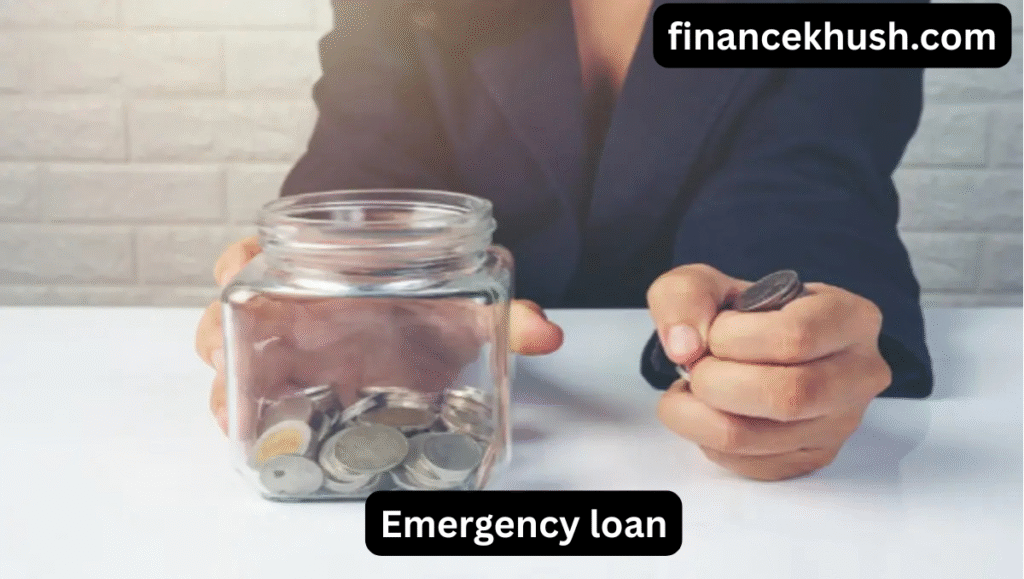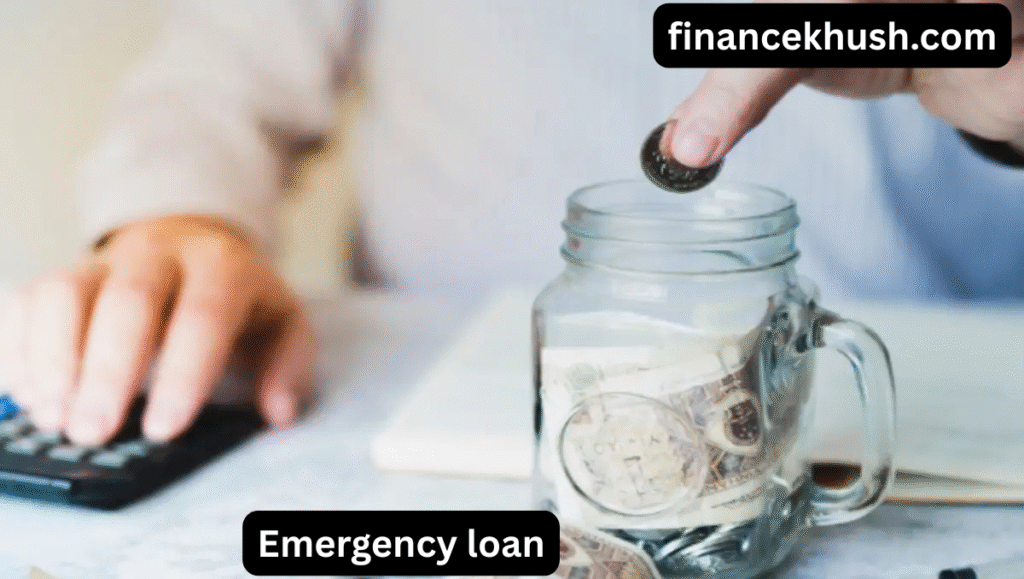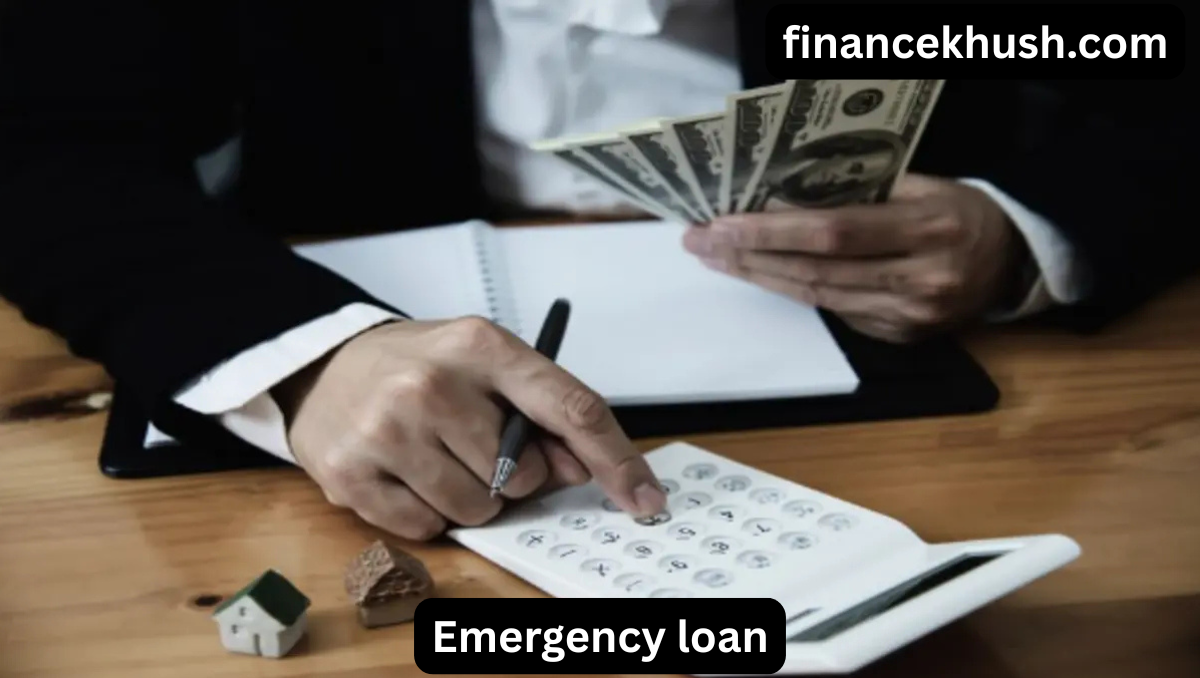Emergency loan is a financial solution designed to help you cover unexpected expenses when you’re in a tight spot. Whether it’s a sudden medical bill, car repair, or home damage, an emergency loan can provide quick access to the funds you need. These loans are typically easy to apply for, with funds often available within a short period. While they can be a lifesaver, it’s important to use them responsibly. Always borrow only what you need and ensure you can comfortably repay the loan. Understanding the terms and rates is crucial before committing to any loan. With careful planning, an emergency-loan can help you manage financial emergencies without the added stress.
What Is an Emergency-Loan?
An emergency-loan is a type of personal loan that is meant to help you cover unforeseen expenses that require immediate attention. Unlike other loans, which can be planned and applied for months in advance, an emergency-loan is typically designed to address urgent, unexpected needs.
Whether it’s to cover medical bills, repair your car, or even cover unexpected home repairs, emergency-loans are intended to provide quick access to the funds you need when you’re in a bind.
When Do You Need an Emergency-Loan?
Emergencies don’t come with a warning. This means that they often occur at the most inconvenient times. Here are a few situations where you may need an emergency-loan:
1. Unexpected Medical Expenses
Medical emergencies are a major cause of financial stress. Whether you’ve been involved in an accident or need urgent treatment, hospital bills can quickly pile up. Emergency-loans can help bridge the gap until you’re able to pay off your bills or until insurance kicks in.
2. Car Repairs
Your car breaking down can leave you stranded, and the cost of fixing it can sometimes be more than expected. Emergency-loans can provide you with the funds to repair your vehicle and get you back on the road quickly.
3. Home Repairs
If your home suffers damage due to a natural disaster or a sudden appliance failure, repairs may be necessary right away. An emergency loan can give you the cash you need to fix critical issues such as plumbing problems or roof leaks.
4. Lost Job or Reduced Income
If you lose your job or face a sudden drop in your income, an emergency loan can help cover your basic expenses until you’re able to get back on your feet. It can provide relief while you search for a new job or other ways to increase your income.
5. Unexpected Travel Expenses
Sometimes, emergencies happen when you’re far away from home, and you might need money for urgent travel, such as attending a family member’s funeral or handling an emergency abroad.
How Do Emergency Loans Work?
An emergency loan works just like any other personal loan in that it provides you with funds that you must repay over time. However, emergency loans are typically designed to be processed quickly, with funds made available in as little as one business day in some cases.
The loan amount, interest rate, and repayment terms will vary depending on your lender and the type of loan you apply for.
Here’s how the process generally works:
1. Application Process
You’ll need to apply for an emergency loan either online or in person. The application will usually ask for basic information, including your income, credit history, and the reason you need the loan. Lenders will also want to know if you can afford the loan and your repayment terms.
2. Loan Approval
Once you’ve submitted your application, the lender will review your information. If you meet the requirements, you may be approved for a loan. Some lenders offer instant approval, while others may take a few days to process your application.
3. Receiving Funds
Once approved, the funds will be disbursed to your account. Some lenders may provide a check, but the most common way is through direct deposit, which can occur within a day or two.

4. Repayment
You’ll need to repay the loan according to the terms you agreed to during the application process. Typically, emergency-loans come with either a fixed or variable interest rate, which will affect how much you pay in total over the life of the loan. Repayment terms can range from a few months to a few years, depending on the loan amount and your lender.
Types of Emergency-Loans
When it comes to emergency-loans, there are several options available, each with its own pros and cons. Let’s break down the most common types:
1. Personal Loans
A personal loan is one of the most straightforward types of emergency-loans. These are typically unsecured loans, meaning you don’t need collateral to apply for them. You’ll be approved based on your credit score, income, and other factors.
2. Payday Loans
Payday loans are short-term loans that typically require you to repay them by your next paycheck. While they’re easy to qualify for, payday loans usually come with high-interest rates, making them one of the most expensive loan options.
3. Credit Card Cash Advances
If you already have a credit card, you can take a cash advance against your credit limit. However, cash advances often come with high fees and interest rates. It’s a quick way to access funds, but it can become expensive in the long run.
4. Peer-to-Peer Loans
Peer-to-peer lending platforms allow individuals to lend money directly to others. These loans can offer lower interest rates than traditional lenders, but you’ll need to apply through the platform and meet its requirements.
5. Home Equity Loans
If you own a home, you might be able to take out a home equity loan or line of credit. This type of loan uses your home as collateral, meaning the lender can seize your property if you default. Home equity loans often have lower interest rates but are riskier due to the collateral.
6. Auto Title Loans
Auto title loans use your car as collateral to secure a loan. These loans tend to be risky, as you could lose your car if you fail to repay the loan. However, they can offer quick access to funds in an emergency.
Pros of Emergency Loans
There are several advantages to taking out an emergency loan, including:
1. Quick Access to Funds
The primary benefit of an emergency-loan is the quick access to funds. In many cases, lenders can approve loans within a day, and you can receive the money in your bank account shortly after.
2. No Collateral Required
Some types of emergency loans, such as personal loans, don’t require you to put up collateral. This means that if you fail to repay the loan, your assets won’t be at risk.
3. Flexible Loan Amounts
You can often borrow a range of amounts, depending on the lender. Whether you need a small amount or a larger sum, there’s typically a loan option that fits your needs.
4. Fixed Repayment Terms
Most emergency loans come with fixed repayment terms, meaning you’ll know exactly how much you need to pay each month. This can make budgeting easier and help you stay on track with your loan repayment.
Cons of Emergency-Loans
While emergency-loans can be helpful in times of need, they also come with potential downsides:
1. High-Interest Rates
Emergency loans, especially payday loans, often come with high-interest rates. This means that if you don’t repay the loan quickly, you could end up paying much more than you originally borrowed.
2. Short Repayment Periods
Many emergency loans, such as payday loans, come with short repayment periods. This can make it difficult to repay the loan if you’re struggling financially. Missing payments can also result in additional fees and penalties.
3. Potential for Debt
If you’re unable to repay your emergency-loan on time, you may end up in debt. The high-interest rates and fees can quickly add up, making it harder to pay off the loan.
4. Risk of Losing Collateral
If you take out a loan that requires collateral, such as a home equity loan or auto title loan, you risk losing your assets if you can’t repay the loan. This adds an additional layer of risk to borrowing.
Tips for Using Emergency-Loans Responsibly
Emergency-loans can be helpful in tough situations, but it’s important to use them wisely. Here are some tips for borrowing responsibly:
1. Borrow Only What You Need
It can be tempting to borrow more than you need, especially if you’re in a stressful situation. However, borrowing only what you need will help you avoid unnecessary debt and interest charges.
2. Read the Fine Print
Before taking out a loan, make sure you fully understand the terms and conditions. Pay attention to interest rates, repayment periods, and any fees associated with the loan.
3. Have a Repayment Plan
It’s important to have a clear plan for repaying your loan. Make sure you can afford the monthly payments and factor the loan repayment into your budget.
4. Explore Other Options
If possible, explore other ways to raise funds before resorting to an emergency loan. You might consider borrowing from friends or family, selling unused items, or negotiating with service providers.

Conclusion
An emergency loan can be a helpful tool in times of financial distress. Whether it’s for medical bills, car repairs, or unexpected expenses, emergency loans provide quick access to cash when you need it most.
Read more
However, it’s important to use them responsibly and only borrow what you can afford to repay. By understanding your options, comparing lenders, and planning your repayment, you can make sure that an emergency loan works for you and not against you.
Faq’s
1. What is an emergency-loan?
An emergency loan is a type of personal loan that provides quick financial help during urgent situations, such as medical bills, car repairs, or home damage. It helps you cover unexpected expenses when you need funds fast.
2. How fast can I get an emergency-loan?
Emergency loans are designed to be fast. Many lenders approve loans within hours, and you can receive the funds in your bank account within one or two business days.
3. Do I need good credit to qualify for an emergency-loan?
While good credit can help you secure a loan, many lenders offer emergency loans to people with poor or fair credit. However, your interest rate may be higher if your credit is not great.
4. What are the requirements for getting an emergency-loan?
To get an emergency loan, you’ll typically need to provide proof of income, a valid ID, and possibly your credit score. Some lenders may also require details about the financial emergency you’re facing.
5. Can I use an emergency-loan for anything?
Yes, you can use an emergency loan for any urgent need, such as medical expenses, car repairs, home improvements, or other unexpected financial emergencies.
6. What are the risks of taking out an emergency-loan?
The main risks include high-interest rates, especially for payday loans, and short repayment periods. If you don’t repay on time, you could face additional fees and damage to your credit score. Always borrow responsibly.
